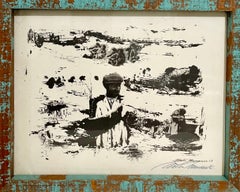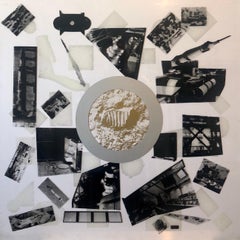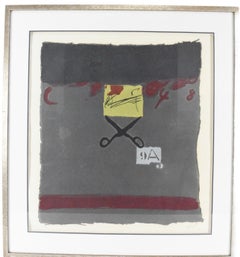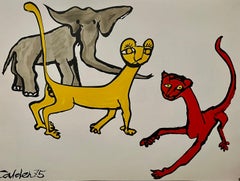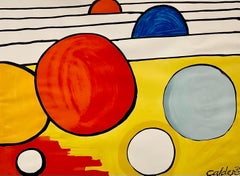Lions Gallery Abstract Prints
1960s Modern Mixed Media
Lithograph, Mixed Media
1970s Pop Art Abstract Prints
Plexiglass, Screen
1970s Abstract Expressionist Abstract Prints
Etching, Aquatint
1970s American Modern Abstract Prints
Lithograph
1970s American Modern Abstract Prints
Lithograph, Offset
Early 2000s Abstract Mixed Media
Color
1960s Abstract Prints
Ink, Black and White, Lithograph
1960s Abstract Prints
Ink, Black and White, Lithograph
1960s Abstract Prints
Ink, Black and White, Lithograph
1960s Abstract Prints
Ink, Black and White, Lithograph
1960s Abstract Prints
Ink, Black and White, Lithograph
1960s Abstract Prints
Ink, Black and White, Lithograph
1960s Abstract Prints
Ink, Black and White, Lithograph
1960s Abstract Prints
Ink, Black and White, Lithograph
20th Century Abstract Expressionist Abstract Prints
Mixed Media
1960s Abstract Prints
Paper, Ink, Lithograph
1980s Abstract Abstract Prints
Mixed Media
20th Century Modern Abstract Prints
Paper
1970s Minimalist Abstract Prints
Etching, Aquatint
1980s Post-Minimalist Abstract Prints
Paper
1980s Post-Minimalist Abstract Prints
Paper, Lithograph
1980s Post-Minimalist Abstract Prints
Paper, Lithograph
1980s Post-Minimalist Abstract Prints
Paper, Lithograph
20th Century Abstract Abstract Prints
Lithograph
1990s Abstract Sculptures
Mixed Media
1990s Contemporary Abstract Prints
Photogravure
1990s Contemporary Abstract Prints
Photogravure
1990s Contemporary Abstract Prints
Photogravure
1970s Abstract Expressionist Abstract Prints
Screen
1970s American Modern Abstract Prints
Screen
1960s Abstract Expressionist Prints and Multiples
Lithograph
1970s Abstract Figurative Prints
Screen
20th Century Modern Abstract Prints
Screen
20th Century Modern Abstract Prints
Screen
1940s Abstract Abstract Prints
Lithograph
20th Century Expressionist Landscape Prints
Charcoal, Lithograph
20th Century Expressionist Landscape Prints
Lithograph
1960s Op Art Landscape Prints
Lithograph, Screen
1960s Op Art Landscape Prints
Lithograph, Screen
1960s Op Art Landscape Prints
Lithograph, Screen
1960s Op Art Landscape Prints
Lithograph, Screen
1960s Op Art Landscape Prints
Lithograph, Screen
20th Century Expressionist Landscape Prints
Lithograph
1990s Abstract Abstract Prints
Screen
20th Century American Realist Landscape Prints
Etching
20th Century Op Art Abstract Prints
Lenticular, Screen
20th Century American Realist Landscape Prints
Etching
20th Century Abstract Expressionist Abstract Prints
Color, Lithograph
1980s Abstract Expressionist Abstract Prints
Paint, Ink, Handmade Paper
1980s Abstract Expressionist Abstract Prints
Paint, Ink, Handmade Paper
1960s Abstract Expressionist Abstract Prints
Screen
1980s Abstract Expressionist Abstract Prints
Paint, Ink, Handmade Paper
20th Century Pop Art Abstract Prints
Lithograph
1980s Abstract Expressionist Abstract Paintings
Monoprint, Monotype
1980s Abstract Expressionist Abstract Paintings
Monoprint, Monotype
1970s Abstract Expressionist Abstract Prints
Lithograph
20th Century Abstract Abstract Prints
Offset
Early 2000s Abstract Prints
Etching, Aquatint
Early 2000s Abstract Abstract Prints
Drypoint, Etching
1940s Folk Art Figurative Prints
Screen
